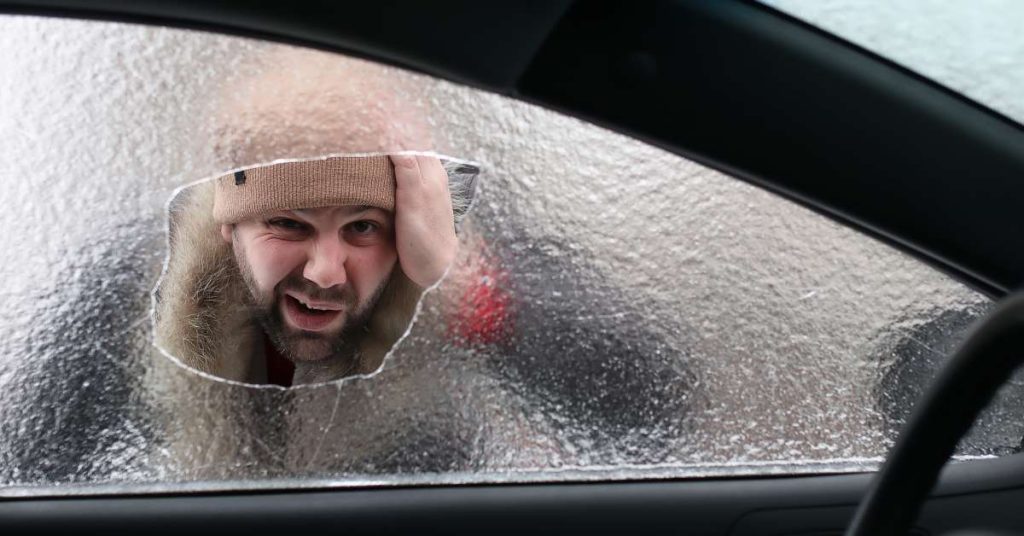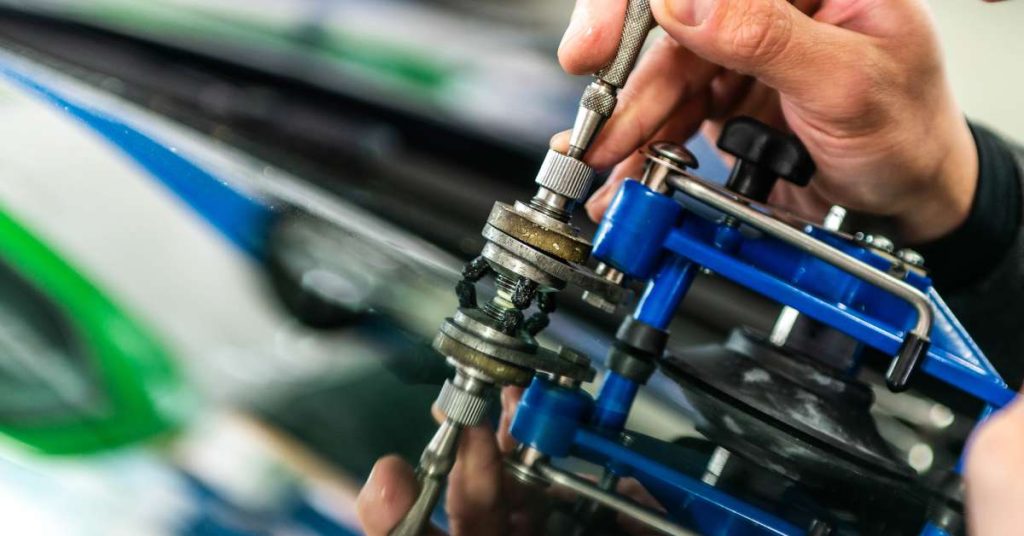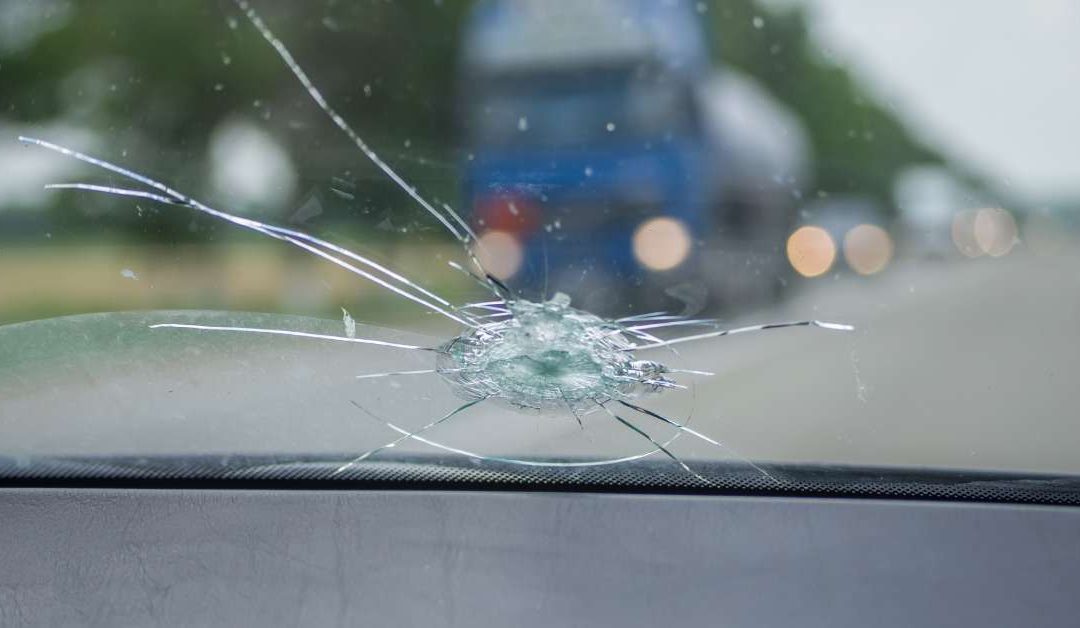Imagine you’re cruising down the highway, relishing the open road. Suddenly, a loud thunk interrupts your peace, and you notice a small crack spreading across your windshield.
Every vehicle owner dreads this scenario, so what should you do when a rock hits your windshield? Discover essential tips for handling this common problem to secure your safety and prevent further damage.
Understanding the Damage When a Rock Hits Your Windshield
Windshield damage varies in severity—a small chip might seem insignificant, but it could easily evolve into a larger crack. Learn which is which with this information.
How Rocks Cause Cracks
Tiny rocks and debris can fling from other vehicles’ tires, striking your windshield at high speeds. When a rock or debris collides with the windshield, it causes a small area of intense pressure that can lead to cracks or chips, which can quickly spread if not addressed.
Types of Windshield Damage
Chips often resemble a star-like pattern, while cracks may appear linear. Understanding the type of damage to your vehicle can help you determine the appropriate response.
Immediate Safety Concerns
A damaged windshield compromises your safety since it can severely obstruct your view and weaken your vehicle’s structural integrity. In severe cases, a cracked windshield might not withstand airbag deployment during an accident, creating an increased risk of serious injuries.

First Steps After Impact
Once you notice windshield damage, follow these steps to handle the issue.
Assess the Damage
Carefully inspect the size and location of the damage to determine whether it affects your line of sight or poses an immediate threat to safety. Measure the length and note its location—this information helps you decide whether to repair or replace the windshield.
If the crack looks small, apply clear tape over it to prevent dirt and moisture from entering. This temporary fix can buy you some time until you seek mechanical help. Avoid washing your car in the interim, as water pressure might worsen the damage.
Plan Your Next Move
Consider the damage’s severity and your driving habits to evaluate what to do next. A minor chip on a vehicle you only use to drive short distances might give you some leeway. However, larger cracks or frequent highway driving demand immediate attention.
Should You Repair or Replace Your Windshield?
Although repairs are faster, less expensive, and more convenient, some scenarios require windshield replacement. Learn about both solutions to select the right one for your windshield.
When to Repair Your Windshield
Repairing your windshield offers a quicker and cheaper alternative to replacing the entire thing. You can safely repair chips smaller than a quarter or cracks shorter than three inches. If you’d rather take your vehicle to a mechanic, that’s also an option. A professional can fill in the damage with a special resin to restore clarity and strength.
Signs You Need a Replacement
Larger cracks or damage obstructing the driver’s view require replacement sooner than later. Promptly addressing windshield issues maintains safety, as a compromised windshield can impair visibility and weaken the vehicle’s overall safety structure. Ignoring the damage also increases the risk of accidents and can lead to more costly repairs down the line, so it isn’t worth it.
Costs and Considerations
Repairing chips in your windshield usually costs less than $100, whereas replacement can range from $200 to $1,000 depending on your car’s make and model. Insurance often covers these costs, so check your policy and review your coverage.
Selecting a Professional Service
If your windshield damage is severe enough to warrant a trip to a mechanic, review the information ahead to find the best service.
Finding a Reliable Technician
Seek recommendations from friends and family or read online reviews to find reputable technicians. Look for companies like Fusion Windshield Repair certified by the Auto Glass Safety Council (AGSC) for high-quality service. Ask about any warranties and guarantees available for your windshield.
Questions To Ask
Before committing to a service, ask about their experience with your specific vehicle model and inquire about the materials they use and whether they offer mobile services. Transparency about costs and timelines will help you make an informed decision.
Check customer reviews and ratings for valuable insights into service quality and customer satisfaction. Choose a provider with a strong reputation for confidence in the service you receive.
Comparing Quotes
Request quotes from multiple technicians to ensure you get a fair price. Remember, the cheapest option may not always suffice.
Prioritize experience and customer satisfaction for a safe and durable repair or replacement. Additionally, comparing the scope of services in each quote will help you receive the best value for your investment.

The Importance of Windshield Recalibration
Modern vehicles feature advanced driver-assistance systems (ADAS) that depend on cameras and sensors mounted on the windshield. After replacement, windshield recalibration guarantees these systems function correctly, maintaining safety features such as lane-keeping assistance and adaptive cruise control.
Why Recalibration Matters
Any misalignment can impair these systems and lead to potential safety hazards on the road, making recalibration crucial. Neglecting recalibration can lead to inaccurate sensor readings that could potentially cause accidents.
How Recalibration Works
Recalibration involves aligning the ADAS sensors to manufacturer specifications. This process requires specialized equipment and skilled technicians. Make sure the service you choose offers recalibration as part of their windshield replacement package.
Preventing Future Damage
You can keep your windshield in one piece by following these tips.
Follow Safe Driving Habits
Practice safe driving habits to minimize the risk of windshield damage. Maintain a safe distance from large trucks and construction vehicles, which can fling debris toward your car. Avoid sudden lane changes near gravel or construction areas.
Purchase Protective Film
Consider applying a protective film to your windshield, as these films can absorb impacts and reduce the likelihood of chips and cracks. They also provide an extra layer of UV protection to preserve your vehicle’s interior.
Regular Maintenance Checks
Include windshield inspection in your maintenance routine, checking for any signs of damage or wear and addressing issues promptly. Keeping your windshield clean also reduces glare, improving visibility and safety.
Dealing with a rock hitting your windshield can cause stress but taking prompt and informed action can make all the difference. Preventive measures and regular maintenance equip you to handle future windshield challenges.


Recent Comments